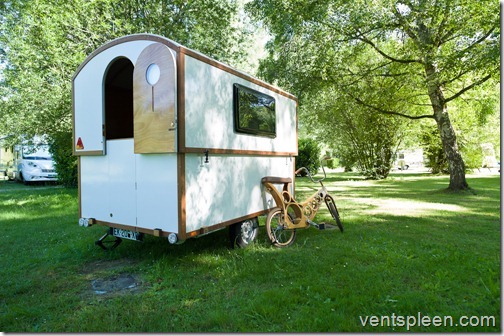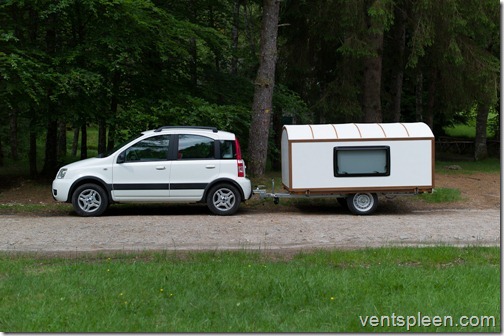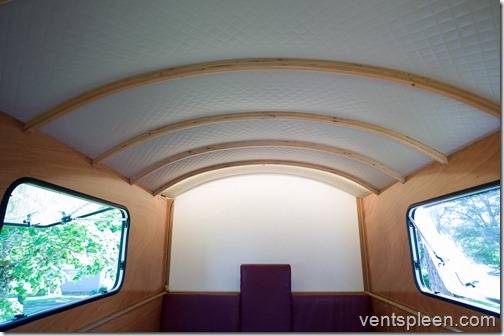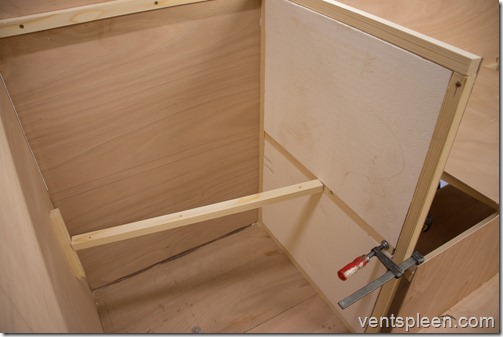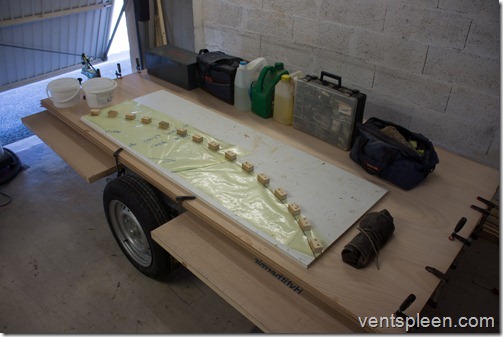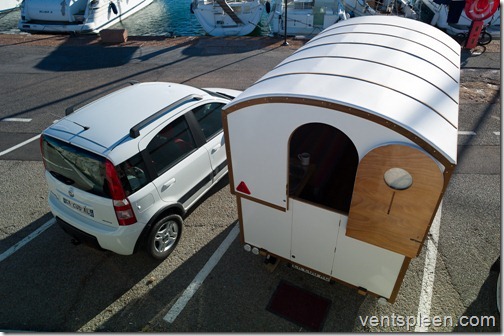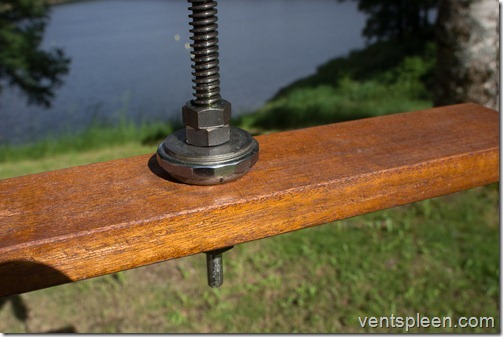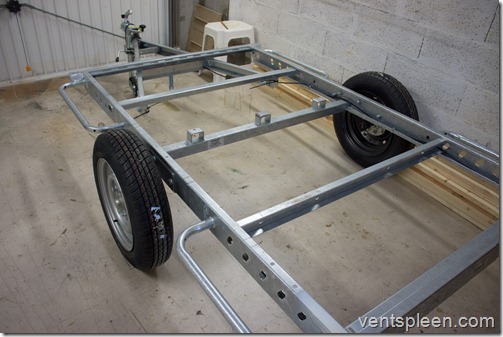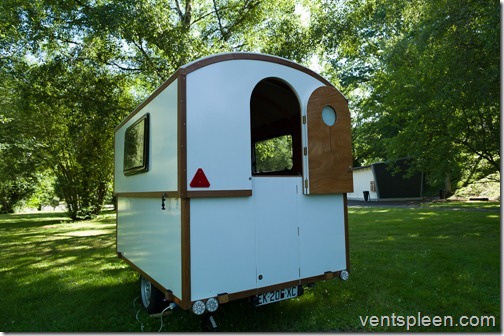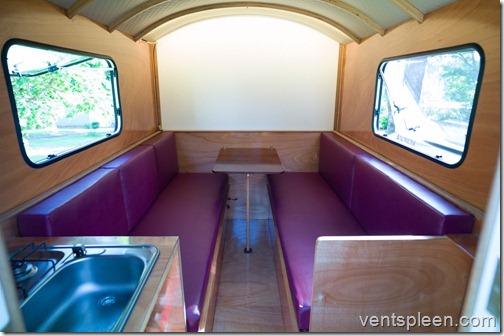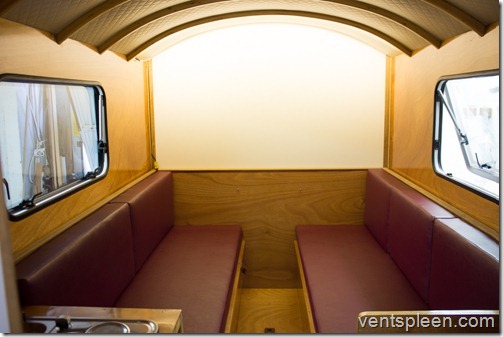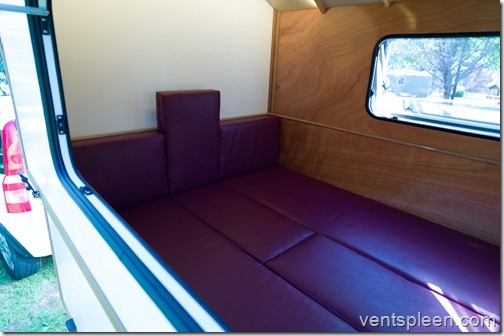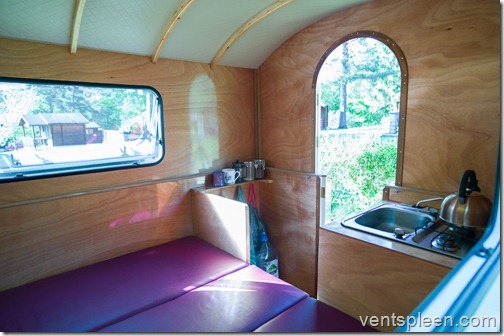Design is such a fascinating subject. So much can influence a design, from the thoughts and experiences of the designer to the things that either they or the marketplace dictate. Often there is legislation to consider. All of these things can have a massive effect on the end result.
More even than this though is the aspect of practicality. This is at the very heart of design. For me it’s the overriding criteria for a design. Of course I don’t mind if it looks cool or funky at the same time but I find that if you design something practical so that it just works it’s easy for people to understand and a simple working functionality is clear for everyone to see.
Take the 2CV, a simpler more practical car could hardly be imagined and yet this tinny, slow little car caught the imagination of the world. But you can be sure, no matter how cute it was, if it couldn’t get you from A to B then it would have failed as a design. I’m not saying the Deux Chevaux was a great car but no one cared about that because it simply worked and this simple fact is enough to endear people to a design.
In designing the Slidavan I confess I focused pretty much exclusively on practicality. The bottom line is, it’s all very well designing a fancy caravan with a nice flowing aerodynamic shape but it just adds complication to the build and the fitting out and at the end of the day you still have to drag this massive lump through the air at great expense and some trepidation. Woodenwidget is all about offering plans that allow anyone to make a boat, bike or caravan. If the initial design is too complicated then the plans will be too.
If I couldn’t make the Slidavan aerodynamic, I could at least make it reduce in size when it was being towed, this makes much more sense to me. If you can make the caravan the same size and height as the tow car you can cut down on drag massively.
Working on the practicality aspect again it seemed to me that the best way to get maximum interior volume and ease of build was to use a simple box shape. You get more in it and fitting out the interior is made much simpler as every angle is square. Ok, so a box is not great looking so it needed a simple way to disguise it. The answer was a curved roof.
This is perhaps the most complicated part of the Slidavan but it’s worth it because it puts a round shape on the top of the box which isn’t much I know but that one curved surface makes all the difference and draws your eyes away from the boxyness of the design. The curved roof also looks lovely when you are inside. What better than to look up and see curved varnished beams spanning your little home.
There is also a practical reason for having curved beams and that is because it is a good way to get extra headroom without paying a penalty for it. By lowering the sides, it helps the box to be longer, more rectangular and less like a cube. Again, it’s just a small thing but all these little things add up.
Curved beams, although a little time consuming to make, give so much to the design that it’s worth the extra effort. In any case, the end curves are cut out of the panels so don’t need beams and there are just a few in between and as they all share the same curvature, only one gluing jig is needed.
The down side to a curved roof is the difficulty that it brings to adding holes or hatches which are designed to go only on flat surfaces but quite honestly not having holes in a roof is a very good idea for lots of reasons. As nice as it might be to lay on your bunk looking out at the stars through a big hatch, the truth is condensation will form on a cold night and there is nothing more unpleasant than having a big cold drip of water in your ear at three in the morning. Ask me how I know.
Also by curving the roof it reduces the chances of leaks as water cannot rest, it has to roll off. It does make using the roof for storage a bit more complicated but it wouldn’t be hard to make a simple framework over the whole lot if you wanted to. Solar panels are now available in flexible form so they could be laid over the top easily enough.
The Slidavan has two large windows, one in each side and another in the door at the rear so plenty of light comes in. There isn’t really a need for a hatch in the roof and since most of the heat is lost from warm air rising it seems to me that a hatch is just a good way of letting heat out of your space on a cold day.
All in all, not being able to put a hatch in the roof did not seem to me to be much of a sacrifice considering the advantages and great look of a curved roof somewhat reminiscent of a bow top gypsy caravan or a classic wooden yacht. One final advantage is the fact that a cloth roof is also very light and it always pays to reduce weight the higher up you go. It improves stability on the road.
The design, as all good practical designs often are, was born of necessity. I wanted a simple place to camp but I wanted comfort and space but nothing I saw on the market did anything for me. Everything was too big or too heavy. By researching caravans I discovered the rules and laws. What I discovered was that there are no special requirements for trailers under 500 kilos. They don’t even need brakes!
Normal caravans are so heavy that they need to be licenced and controlled. Your insurance will go up, you need special mirrors and you’ll drive so slowly that you’ll drive other road users quite mad. But what if you could make a caravan that weighed less than 500 kilos all in? Well, there are a few out there but they are all expensive, the cheapest I saw was about £4000 and it was just a cheap fibreglass moulded shape, too big to tow and yet too small to stand up or cook in. Some of the more expensive small caravans I saw were as much as £12000 but they had the same problems.
Teardrop campers seem popular, I suppose because they are small and relatively aerodynamic but there’s only a bed and if you want to cook, you have to go around the back. Maybe these caravans are designed for Africa or Australia or other rugged places where it never rains. Well I’m from Europe and it rains here so any caravan I wanted had to be big enough to stand up and cook in.
Obviously I considered a camper van but they are so expensive to run and they just sit there most of the year doing nothing which is a pitiful waste of money and resources. Plus they cost a fortune to buy and if they’re small enough to be economic to use, they’ll be too small and compromised inside.
Having discovered the laws about trailers it led me to thinking, why not make a lightweight caravan that simply bolts to a cheap naked trailer? So I began looking at ways to build a simple and light caravan. Having a simple box shape means making it couldn’t be easier. All I had to do was come up with a light and structurally rigid way of doing it.
The simplest, cheapest, lightest and easiest way I could come up with using easy to find commonplace materials was with was a sandwich of plywood over panels of extruded polystyrene to create a rigid, lightweight, tough, cheap and yet well insulated structure. One thing you do not want in a small space is condensation and this is why caravans are more comfortable than tents, because they are insulated.
Here you can see one of the interior bulkheads being assembled. Note the wooden framework with the extruded polystyrene between the battens. A batten needs to be fitted everywhere a fastening will go. Another sheet of 3mm ply will be glued to this to complete the panel.
The down side to this system is the need for a very large and flat surface to make the panels on as twisted panels would stop a smooth telescopic action and the top section might jam. The other down side is that the framework needs to correspond to the window cut outs and interior pieces like bunks.
The first problem was easy enough to solve. The floor panel is large enough to use to assemble and glue all the other panels on. So long as you get the floor level it is easy enough and since the floor is made directly on to a square and flat trailer chassis it’s all good. As for positioning the interior framework well that’s just a question of pre planning where everything is going to go. Another big advantage to this system is that you really don’t need much space to build a Slidavan, although you do need a doorway wide enough to get the caravan out after it’s made! A single car garage is quite adequate.
Here a panel is being glued. Weight is added to hold it down while the glue sets. The white panel with the curve on it is the jig for the roof beams. It is there to help add weight to ensure a good glue bond.
Experience comes in to design as well and having lived on a boat for over a quarter of a century I have learned a thing or two about small space living so I ought to be able to come up with a comfortable and yet practical interior design. The Slidavan is minimal and traditional in design. A bunk each side with the floor in the centre of the caravan under the highest part of the roof of course.
The door at the back is just obvious. I don’t know why caravans so often have a side door. How can you load a bicycle or a sailing dinghy in from the side? The Slidavan can carry from 100 kilos of extra weight so why not use it to transport your toys at the same time?
How to raise and lower the telescopic top took a little while to work out. I thought it would be nice to have an electronic top that went up with just the flick of a switch but there is no easy way to do this and it adds weight, cost and complexity. Far better to have a simple separate system that is not attached to the caravan at all.
There was a caravan from many years ago called a Hi-Lo and it used a hydraulic cable system which lifted the four corners and I am sure it worked very well but the complexity and weight ruled out such an option for the Slidavan. I had to find a better way.
As the Slidavan is symmetrical it made sense to simply lift the upper section from the centre. So one of the curved beams is placed centrally and a lifting device placed directly under it. I couldn’t see any reason why it wouldn’t work so I set about experimenting. At first I used a simple 10 mm threaded bar but the threads were too fine and after a few operations it seized up. That would never do. Whatever system I came up with had to be reliable.
These days it’s possible to buy almost anything so I did some research and found what is called a leadscrew. It’s basically a threaded bar but with a greater pitch and squared off threads. It is designed to handle large loads. It’s exactly the kind of thread that you might find on a car scissor jack. I had hoped to be able to use and modify a car jack as they are easy to find and cheap. However the lift of the Slidavan’s upper section is 700 mm and no jack I could find had that kind of range.
So the final lifting mechanism is a 12 mm diameter leadscrew with a 3 mm pitch. That means that for every revolution the upper section would lift 3 mm. A bronze nut was bought along with the leadscrew as it is much less likely to gall. This was fitted in to a wooden tube and cross brace. The whole lot operated with a battery powered drill. A thrust bearing is needed to take the force and the weight and this came from the head race of a bicycle. Perfect.
It takes a couple of minutes to set up the lifting mechanism and less than a minute to raise the upper section the full distance. This is fast enough for anybody. Once the upper section is up four bolts are fitted to hold it in position and the lifting mechanism is then removed and stowed under a bunk. The lifting mechanism weighs just three kilos which is very light considering it is lifting about 100 kilos.
The overall length of the Slidavan is logically dictated by the length of a sheet of plywood but of course not every country uses the metric system and although the sizes between Imperial and Metric plywood is similar is isn’t the same so the plans had to take in to account the fact that Imperial ply is 62 mm shorter. Oh the demands on the designer. But no worries, I would never want to alienate anyone from building a Slidavan so even if you use Imperial materials you can still build yourself a Slidavan.
So with all the design issues solved it was time to make a Slidavan. I bought a new naked trailer from a French company called Norauto. It cost a very reasonable 500€. It has a track of about 160 cm so I would build the Slidavan over the wheels. They also sell a wider version so if you wanted you could build a Slidavan and place it between the wheels. It does mean that the Slidavan would be a bit narrower but of you were looking to go off road the extra stability that the wider trailer offers would be perfect.
The building of the Slidavan was straightforward. You can make a panel a day so it would take nine days before all the panels were made. Since it doesn’t take that long to make a panel it made sense to laminate a roof beam a day to save time.
All of Woodenwidget’s designs are light weight. There are a lot of good reasons for this. Using less weight means less materials. Less materials means less waste and lower cost. When you’re making a folding dinghy you want it to be as light as possible otherwise it just makes handling it a pain. A caravan can be heavier but you will still pay for a cavalier attitude to weight reduction. Every single thing that goes in to a Slidavan adds weight. A screw might only weigh a fraction of a gram but multiply that by 1000 and suddenly you’re looking at a kilo or two. It is quite shocking how quickly the weight adds up. So it just makes sense to keep this in mind right from the very start of the design process through to the end product.
There are loads of other considerations of course. How would the gap between the panels be sealed? How would the top section be held to the bottom during transporation. One by one these issues were solved always by first looking at the lightest option and only accepting a heavier solution if a lighter one could not be found or would not function correctly.
In the end the Slidavan structure including the full interior came in at just 200 kilos which isn’t too bad at all. The trailer weighs about 100 kilos so the Slidavan has an unladen weight of about 300 kilos. The law states that you can tow a unbraked trailer with a gross capacity of 500 kilos so 300 kilos leaves a massive 200 kilos of payload if required. However not all cars are able to tow this much weight.
For example, Bernie my trusty Panda 4×4 1.2 litre with just 65 hp is allowed to tow 400 unbraked kilos so that reduces the pay load to 100 kilos but that is still an awful lot of gear and in any case it would be far better to put stores and such like in the tow car and try and leave the Slidavan as light as possible.
Towing the Slidavan is a doddle. You can feel the extra weight when pulling away and going up steep hills but otherwise it’s all too easy to forget you’re towing a caravan! But as the Slidavan is no wider or higher than Bernie if I go for a gap with the car I don’t have to worry that the Slidavan won’t fit. On the road you can zoom along, even through the bends. The low centre of gravity keeps the Slidavan following like a trusty Spaniel. Not once has it felt even slightly dodgy. Even at speed on the motorway. Even being passed by big lorries is no problem. It hardly moves at all. It’s very reassuring. I have been blown about more in other cars without a trailer.
Theory is all well and good but the proof is in the pudding as they say. I have no idea what that means but it sounds good. Proof that tucking the Slidavan in behind the tow car comes in many forms. From the excellent stability under all conditions and from the way the front of the Slidavan stays clean while the rest of it can get quite dirty especially in the rain. But the best proof of all is the barely noticeable increase in fuel consumption
Since I have owned Bernie I have never managed to average better than 7.4 litres per 100 kms (or about 38 mpg) the Panda 4×4 was never a very economical car with it’s lofty stance, fat tyres and 4 wheel drive system but after 1000 kms of varied driving I was surprised to see that my average had barely increased to 7.7 litres (36 mpg) and that’s not just towing the Slidavan that’s with a well loaded car. I would have expected a slight raise in consumption just carrying the extra weight so it looks like the Slidavan hardly affects fuel consumption at all which is fantastic and sure proof that the concept is sound.
One thing I did do which may have made a large difference was to move the Slidavan closer to the car than a normal trailer or caravan. For some reason there is always a very long gap between the front of the caravan and the back of the car. I was not sure why this is done but perhaps for two reasons. One, to give more articulation when going backwards and two, so that you can open the tailgate of the car without it clobbering the caravan.
What I can tell you is that I can still easily open the tailgate and even on full lock going forwards in the tightest circles the Slidavan does not get close to the car. And as for going backwards, well why bother? When your caravan is so light, why not just unhitch it and move it by hand? It’s too easy. I believe it is because I moved the Slidavan closer to the car that the fuel consumption is so good. Because it’s so tucked in it in effect becomes an extension of the car. Of course there is skin friction but the bulk of the air is deflected by the car. Result.
So the Slidavan looks cool, tows well, doesn’t increase fuel consumption particularly and is good at speed on the motorway. What is it like to live in? Well I have been traveling and living in the Slidavan for a few weeks now and I must say it is a very nice place to spend time. One day it rained all day. And I mean it rained. Did I care? Not a bit of it. Totally dry and warm. The double glazed windows didn’t even steam up. With its high attractive ceiling you don’t feel cramped or claustrophobic at all. Everyone who sees the Slidavan say the same thing and words like: Massive, spacious and huge are used.
This amuses me no end as the Slidavan is a very small caravan but it doesn’t feel small. This is partly because of the high ceiling which runs the full length of the cabin and the large windows which let in a lot of light but also it’s because the front panel is painted white. The white panel was done so that it could be used as a 60” projection screen! But another advantage is the way it reflects light around the cabin.
Lighting is achieved by a strip of LEDs hidden behind the forward beam. You can’t see the strip and the light it gives off is excellent and because it reflects off the white wall it illuminates the whole Slidavan very well. The white wall also adds a feeling of spaciousness while the wood panels offer warmth and ambience. It’s a nice contrast.
The bed is luxury epitomised. Each single bunk is easily wide enough to sleep on but if you want a massive, spacious and very comfy double bed simply drop in the two seat backs between the bunks. Now you have a 1.6 m wide bed six feet long.
There is a table which attaches to the forward mounting bolts and is very strong and stable. It can be removed in seconds by undoing a couple of wing nuts. The galley area is on the left hand side. It’s nice cooking by the double stable door and looking out. There’s a sink and two burner hob all in one fitted and it’s more than enough.
If you want you could fit another work top on the other side but I decided to leave it open and fit a small shelf instead. As it turns out it was a good move. It gives more options. If you wanted a shower you could hang a curtain and use that area. Or you could put a cold box or a chemical toilet there. There is no shortage of storage in a Slidavan with massive space under each bunk. It’s fair to say that you’d probably exceed the gross weight long before you filled up all the cupboards.
Along the way everyone is fascinated by the Slidavan and perhaps a little jealous too. After all they have to crawl along towing their one ton (or more) caravan. They need a bigger car, wider mirrors, their caravan needs special insurance and a log book plus caravans are one of the most disliked forms of transport on the road. They simply cannot go fast, they can’t go up hills, they can’t drive down narrow lanes, they can’t go off road and they are a nightmare to manoeuvre. None of these failings apply to a Slidavan that’s because on the road it is a small trailer yet in the campsite it is a spacious, comfy and fully insulated caravan. Truly the best of both worlds.
So if you want a Slidavan you’ll have to make one. It would make a great winter project in time for adventuring the following summer wherever you want to go. With its high ground clearance, narrow stance, light weight and low centre of gravity you could take a Slidavan to places no one would dream of taking a normal caravan!
It takes about 200 hours to build a Slidavan and if you buy all new parts it might cost about £3000 to make. That’s a fair chunk of change but see if you can find anything even half as good to buy for double that. This is cheap caravanning! One of the things that has quite shocked me is the sheer cost of a caravan and the equipment you need. I thought yachting was expensive but caravanning is not so far behind. So the Slidavan and a small tow car is one way of reducing the costs enormously and if you buy secondhand parts you could reduce the costs dramatically.
To learn more or buy plans please visit woodenwidget.com and if you do buy plans we will plant five trees on your behalf.
Happy camping
